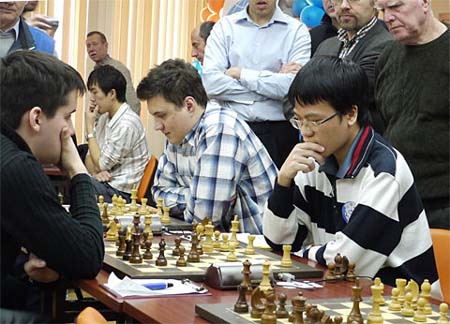Secrets in the brain
Chess practice for many years using the brain is completely different from amateur chess players.

Xiaohong Wan, a scientist who works at the Riken Brain Research Institute in Japan, and colleagues use magnetic resonance scanners to compare the activity in amateur and professional players' brains when they play chess games. General, Discovery News reported.
The results show that, while professional players play chess, some areas in their brains glow (ie activity), but that phenomenon does not occur in the brains of amateur players.
When the research team asked for the next skill to mull the next move, the area of the peaked lobes was stronger. Post-apex area for image processing and segmented memory.
If the professional player is forced to quickly calculate the flag, the tail area in their brain is more active. This is the area that regulates human-oriented behaviors.
' The post-apical region and the caudal region in the amateur and normal brain do not work when they calculate the flag, ' the team wrote in Science magazine.
The team believes that, during a professional training session, the neural circuit connecting their caudal region and their apical region is more and more effective. Thanks to that, the professional player will identify the aspect of the game quickly, and calculate the most reasonable plan for the next move.
' The idea of chess is created very quickly and completely automatically, meaning there is almost no need for thinking activity ,' the team explained.
- Interesting facts about the brain
- Strange stories are true about the human brain
- Secrets in the brain of people who commit suicide because of depression
- Shocking facts about the human brain
- Technology 'read' sound in the brain
- Still living well despite missing half a brain
- Interesting things about the brain
- Published a map of human brain
- The second brain is located at ...
- 15 incredible facts about the brain
- Strange stories about people without brains
- The new finding contrasts with Einstein's brain
 Green tea cleans teeth better than mouthwash?
Green tea cleans teeth better than mouthwash? Death kiss: This is why you should not let anyone kiss your baby's lips
Death kiss: This is why you should not let anyone kiss your baby's lips What is salmonellosis?
What is salmonellosis? Caution should be exercised when using aloe vera through eating and drinking
Caution should be exercised when using aloe vera through eating and drinking